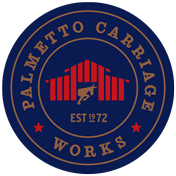Palmetto Carriage Works®
Animal Welfare and FAQ

Quality Of Care For Our Animals
At Palmetto Carriage Works®, we treat our animals like family. Our horses are specifically trained and well-equipped to handle carriage tours in the city and we pride ourselves on the quality of care given to them. With over 30 horses at the barn in Downtown Charleston and on the farm on John’s Island, Palmetto Carriage Works makes sure that each animal is treated with top quality care based on their individual needs.
No one is more concerned about animal welfare than our company. Here are the answers to some commonly asked questions about our horses, but if you have any other questions – please ask!
